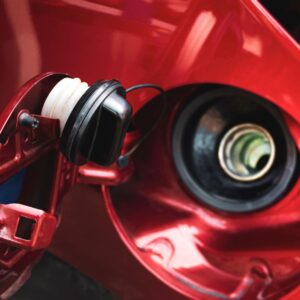Driving your BMW is a joy, but not if you can’t trust its fuel gauge readings. The inaccurate data can lead to trouble while you’re on the road.
For example, they might show you that your fuel tank is already half empty when you know for a fact you topped it off not too long ago. In some cases, you might get readings that indicate you have more fuel than you do, potentially landing you in trouble if the tank empties while you’re far from gas stations.
Because it can be dangerous to drive with incorrect readings, it’s important to know what causes such a problem and what steps you can take to fix it.
BMW Fuel Gauge Stuck on Half Tank: Common Causes

Inoperative Sending Unit

The sending unit should have about 2 ohms when full and 85 ohms when empty. If you insert a 2 ohm resistor in the harness connector on the right pins, you should see the gauge go to full when you cycle the ignition key.
Bad Fuel Gauge
If the fuel gauge is stuck on half a tank, there might be something wrong with the fuel gauge itself or possibly the instrument cluster computer that receives the signals from the sender and drives the gauge. If you disconnect the sending unit on a BMW, the gauge typically goes to empty.
Problems With Circuitry
Another common cause for inaccurate fuel gauge readings is bad circuitry in your BMW’s electrical system. The voltage might be too low for the gauge to get proper readings, which typically occurs when there’s an interrupted ground connection. Corrosion can also cause problems with the circuitry.
Check the fuse box to see if there’s anything wrong with the fuse connected to the fuel gauge. If you’re unsure of which one that is, consult your owner’s manual. If the fuse is blown, this might be what’s responsible for incorrect fuel gauge readings.
Note: A faulty fuse is not likely the cause if the gauge is the only issue
How to Fix Your BMW’s Inaccurate Fuel Gauge Readings
How to fix this issue obviously depends on its cause as well as the model and year of the vehicle, so there isn’t a silver bullet, as nice as that would be.
Common ways to fix incorrect fuel gauge readings from your BMW include fixing bad wiring, hiring a professional to do maintenance on your car, and inspecting the sending unit for signs of damage. Resetting or recalibrating the fuel gauge is also a possible fix.
More often than not, faulty fuel gauges are to blame for inaccurate readings but it’s worth checking on the wiring and other components for problems as well. Here’s a look at the common fixes.
Fix Bad Wiring
Clean any corrosion in the wiring and the circuitry, and keep a sharp eye out for blown fuses. Replace any damaged wires.
Hire a Professional for Maintenance
Regular maintenance is the key to prolonging your vehicle’s lifespan. Professionals can help you identify what’s wrong with your vehicle and make recommendations on how to fix it. It’s important to bring your vehicle to a mechanic for maintenance at least twice a year.
Inspect the Sending Unit
If the sending unit is inoperative, it’s important to get it repaired or replaced as soon as possible. You might need to test the sending unit yourself to see if it’s working properly.
Reset or Recalibrate the Fuel Gauge
If the fuel gauge isn’t calibrated properly, you can get inaccurate readings. Resetting the fuel gauge might make it display proper readings again.
How to Test a Fuel Gauge
If you want to test your BMW’s fuel gauge, you’ll need the following equipment.
- Safety gloves and glasses
- Multimeter
- Screwdriver set
- Socket set
- Trim removal tools
To test your BMW’s fuel gauge, follow these steps carefully.
- Wear your safety gloves and glasses.
- Inspect the fuses of your fuel gauge to see if any of them have blown. If you notice any blown fuses, replace them and try running the gauge again. If the problem hasn’t been fixed, there might be something wrong with the electrical system.
- If the fuses work, check the wiring of the fuel gauge. If there are corroded and damaged wires, replace the wires and try running the gauge again. If these don’t fix the problem, there might be something wrong with the sending unit.
- If the fuses and the wiring are both fine, check the sending unit. The float might be broken or there could be something wrong with the terminals. You can determine whether or not a sending unit is inoperative by using a multimeter.
Place one probe on the sending terminal and another probe on the ground. Move the float once the multimeter is on. If the resistance doesn’t change, the sending unit needs to be replaced.
How Much Does it Cost to Repair a Fuel Gauge?
The cost of repairing a fuel gauge depends on which components have been damaged. The price can range from $10 to $800.
Blown fuses are cheap and easy to repair, whereas fixing an inoperative gauge can cost up to $400 including labor costs if you hire a mechanic. The sending unit is the most expensive component of the fuel gauge to replace, costing up to $800.
Any information provided on this Website is for informational purposes only and is not intended to replace consultation with a professional mechanic. The accuracy and timeliness of the information may change from the time of publication.







































